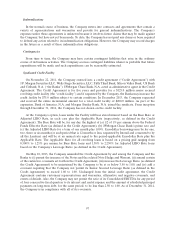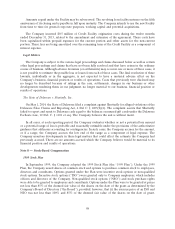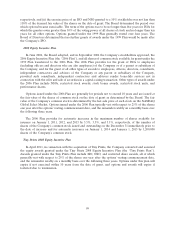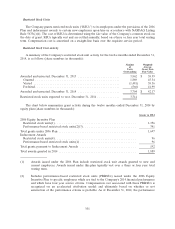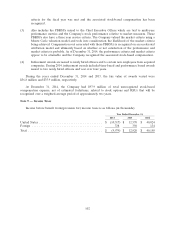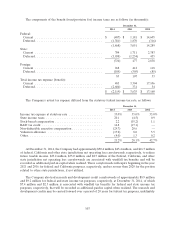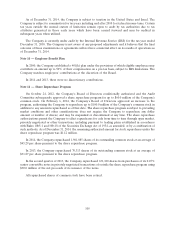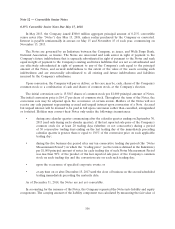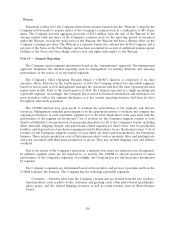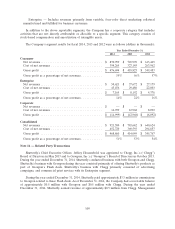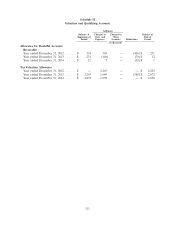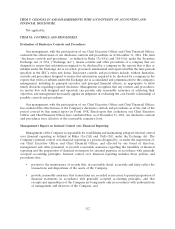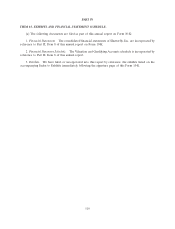Shutterfly 2014 Annual Report Download - page 108
Download and view the complete annual report
Please find page 108 of the 2014 Shutterfly annual report below. You can navigate through the pages in the report by either clicking on the pages listed below, or by using the keyword search tool below to find specific information within the annual report.
a similar liability that does not have an associated convertible feature. The carrying amount of the equity
component representing the conversion option was determined by deducting the fair value of the liability
component from the face value of the Notes as a whole. The excess of the principal amount of the liability
component over its carrying amount (‘‘debt discount’’) is amortized to interest expense over the term of
the Notes. The equity component is not remeasured as long as it continues to meet the conditions for
equity classification.
In accounting for the transaction costs related to the Note issuance, the Company allocated the total
amount incurred to the liability and equity components based on their relative values. Issuance costs
attributable to the liability component, totaling $6.4 million, are being amortized to expense over the term
of the Notes, and issuance costs attributable to the equity component, totaling $1.7 million, were netted
with the equity component in stockholders’ equity. Additionally, the Company recorded a deferred tax
asset of $0.6 million on a portion of the equity component transaction costs which are deductible for tax
purposes.
Concurrently with the Note issuance, the Company repurchased 0.6 million shares of common stock
for approximately $30.0 million.
The Notes consist of the following (in thousands):
December 31, 2014 December 31, 2013
Liability component:
Principal .......................................... $ 300,000 $ 300,000
Less: debt discount, net of amortization ................... (44,782) (56,507)
Net carrying amount ................................... $ 255,218 $ 243,493
Equity component(1) .................................. $ 63,510 63,510
(1) Recorded in the consolidated balance sheets within additional paid-in capital, net of the $1.7 million
issuance costs in equity.
The following table sets forth total interest expense recognized related to the Notes (in thousands):
Year Ended Year Ended
December 31, 2014 December 31, 2013
0.25% coupon ....................................... $ 750 $ 469
Amortization of debt issuance costs ........................ 1,179 705
Amortization of debt discount ............................ 11,726 7,002
$ 13,655 $ 8,176
Note Hedge
To minimize the impact of potential economic dilution upon conversion of the Notes, the Company
entered into convertible note hedge transactions with respect to its common stock (the ‘‘Note Hedge’’). In
May 2013, the Company paid an aggregate amount of $63.5 million for the Note Hedge. The Note Hedge
will expire upon maturity of the Notes. The Note Hedge is intended to offset the potential dilution upon
conversion of the Notes and/or offset any cash payments the Company is required to make in excess of the
principal amount upon conversion of the Notes in the event that the market value per share of the
Company’s common stock, as measured under the Notes, is greater than the strike price of the Note
Hedge, which initially corresponds to the conversion price of the Notes and is subject to anti-dilution
adjustments substantially similar to those applicable to the conversion rate of the Notes.
107


